click on the thumbnail for a larger image
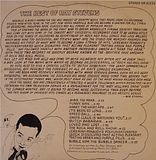

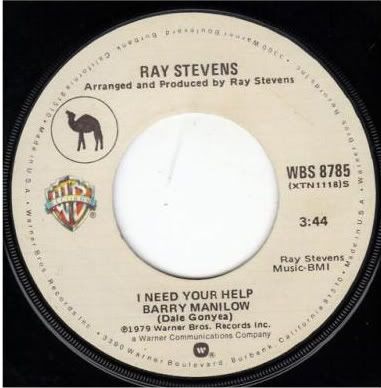 I rarely make mention of the follower link but in case there are those who over-look this feature, due to all of the wonderful distraction of information and images contained on this blog page, let me introduce you to the "follow" link. It's located off to the right side of the page. Once anyone becomes a follower they will be updated whenever I post a new blog entry. It's a good thing to be a follower simply because I've been known to write 2 or 3 blog entries per day but then sometimes I take a break. As is the case now, I've been in the process of taking a break. Actually, this is my first entry on this specific blog in a span of 10 days. My last blog post was on November 19th. I've often found that when I do take a hiatus that whenever I return and publish a new blog entry it doesn't show up in the Google blog search right away...but if you're a follower you'll be alerted to the new entry automatically...and this would eliminate the potential problem that some may experience of not being aware that there's a new Ray Stevens blog entry that I've written.
I rarely make mention of the follower link but in case there are those who over-look this feature, due to all of the wonderful distraction of information and images contained on this blog page, let me introduce you to the "follow" link. It's located off to the right side of the page. Once anyone becomes a follower they will be updated whenever I post a new blog entry. It's a good thing to be a follower simply because I've been known to write 2 or 3 blog entries per day but then sometimes I take a break. As is the case now, I've been in the process of taking a break. Actually, this is my first entry on this specific blog in a span of 10 days. My last blog post was on November 19th. I've often found that when I do take a hiatus that whenever I return and publish a new blog entry it doesn't show up in the Google blog search right away...but if you're a follower you'll be alerted to the new entry automatically...and this would eliminate the potential problem that some may experience of not being aware that there's a new Ray Stevens blog entry that I've written.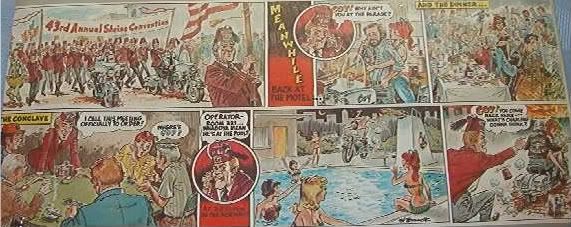
 The magazine did a write-up of his career, to date, and like most write-up's of Ray during this time period it focused a lot on his over-shadowed and under-rated serious work amidst the success of a hit comedy single and album. The eye-grabbing sub-heading "More Than Meets the Ear" is a reference to the many different styles of music that Ray's recorded. Inside the magazine revealed the complexity of an artist known for having success with comical projects but longed to have the same commercial notoriety for serious work...not that he didn't take comedy seriously...it's just that during much of Ray's career the comical image and reputation is what the public at large was mostly aware of and what most television programs wanted to highlight. In spite of the comical successes Ray enjoyed late in 1979 and into 1980 with his final Warner Brothers single, "I Need Your Help, Barry Manilow" and his RCA debut single, "Shriner's Convention", Ray would go on to record three consecutive non-comical albums: One More Last Chance and Don't Laugh Now in 1981 and 1982 for RCA and then Me in 1983 for the Mercury/Polygram label. After the release of the 1983 album...which went virtually unnoticed throughout the latter half of 1983 and into 1984...Ray went to MCA Records and became a country comedy performer and from that point forward the comedy direction was there to stay.
The magazine did a write-up of his career, to date, and like most write-up's of Ray during this time period it focused a lot on his over-shadowed and under-rated serious work amidst the success of a hit comedy single and album. The eye-grabbing sub-heading "More Than Meets the Ear" is a reference to the many different styles of music that Ray's recorded. Inside the magazine revealed the complexity of an artist known for having success with comical projects but longed to have the same commercial notoriety for serious work...not that he didn't take comedy seriously...it's just that during much of Ray's career the comical image and reputation is what the public at large was mostly aware of and what most television programs wanted to highlight. In spite of the comical successes Ray enjoyed late in 1979 and into 1980 with his final Warner Brothers single, "I Need Your Help, Barry Manilow" and his RCA debut single, "Shriner's Convention", Ray would go on to record three consecutive non-comical albums: One More Last Chance and Don't Laugh Now in 1981 and 1982 for RCA and then Me in 1983 for the Mercury/Polygram label. After the release of the 1983 album...which went virtually unnoticed throughout the latter half of 1983 and into 1984...Ray went to MCA Records and became a country comedy performer and from that point forward the comedy direction was there to stay.
 I decided to shine the light on these collections once again. Collectables Records, in 2005, issued 6 vintage Ray Stevens vinyl albums onto CD format. Even today there are some out there who aren't aware that these collections exist and so I like to highlight them from time to time. This particular release features the two 1970 Ray Stevens albums Everything Is Beautiful and Unreal. I've posted the front of the CD's before and so for a change of pace I decided to post what the back of the CD's look like. The picture of Ray seated at the piano comes from the back of the Unreal album while inside the fold-out cover there's a picture of Ray and Andy Williams which comes from the back of the Everything Is Beautiful album. Actually, the picture of Ray on the back of the CD is a computer generated reversal of the way he appears on the back of the Unreal LP. Also, the audience seated around the piano in the original picture is cropped out. Originally the picture was taken during a performance on Andy Williams' television show. In the fold-out cover you'll be able to see what appeared on the back of each original LP.
I decided to shine the light on these collections once again. Collectables Records, in 2005, issued 6 vintage Ray Stevens vinyl albums onto CD format. Even today there are some out there who aren't aware that these collections exist and so I like to highlight them from time to time. This particular release features the two 1970 Ray Stevens albums Everything Is Beautiful and Unreal. I've posted the front of the CD's before and so for a change of pace I decided to post what the back of the CD's look like. The picture of Ray seated at the piano comes from the back of the Unreal album while inside the fold-out cover there's a picture of Ray and Andy Williams which comes from the back of the Everything Is Beautiful album. Actually, the picture of Ray on the back of the CD is a computer generated reversal of the way he appears on the back of the Unreal LP. Also, the audience seated around the piano in the original picture is cropped out. Originally the picture was taken during a performance on Andy Williams' television show. In the fold-out cover you'll be able to see what appeared on the back of each original LP.  This particular CD features the 1972 release, Turn Your Radio On, along side the Misty release of 1975. The only studio album that Ray recorded for Barnaby Records to not get re-issued on CD in 2005 is 1973's Losin' Streak. It's a mystery as to why the 1973 album was over-looked but in previous blog entries that I've written I've come to the conclusion that Collectables Records simply wanted a nice, even number...and with three CD releases that comes out to six LP's altogether. A seventh LP is the "odd man out". Excluding compilation releases, Barnaby issued seven albums on Ray Stevens between 1970 and 1975. The label would issue a couple of compilation projects on Ray during the same time period. One of the things that doesn't get a lot of coverage is that Barnaby Records was able to purchase the rights to the Monument recordings of Ray Stevens. This is why on the compilation albums that Barnaby and it's subsidiaries issued you'd find recordings that originated on the Monument label.
This particular CD features the 1972 release, Turn Your Radio On, along side the Misty release of 1975. The only studio album that Ray recorded for Barnaby Records to not get re-issued on CD in 2005 is 1973's Losin' Streak. It's a mystery as to why the 1973 album was over-looked but in previous blog entries that I've written I've come to the conclusion that Collectables Records simply wanted a nice, even number...and with three CD releases that comes out to six LP's altogether. A seventh LP is the "odd man out". Excluding compilation releases, Barnaby issued seven albums on Ray Stevens between 1970 and 1975. The label would issue a couple of compilation projects on Ray during the same time period. One of the things that doesn't get a lot of coverage is that Barnaby Records was able to purchase the rights to the Monument recordings of Ray Stevens. This is why on the compilation albums that Barnaby and it's subsidiaries issued you'd find recordings that originated on the Monument label.  In this CD release we have the 1973 Nashville album and 1974's Boogity-Boogity. This was the third and final 2-LP on 1-CD release. It's catalog number is COL-CD-7688. Turn Your Radio On / Misty has a catalog number of COL-CD-7687. Everything Is Beautiful / Unreal has a catalog number of COL-CD-7686. One of the criticisms of these CD's, in addition to the intellectual debate over sound quality, is that the songs don't appear in the same order as they did on the LP's. As far as Nashville and Boogity-Boogity are concerned the tracks appear on the CD in the same order as they did on the LP. The other two CD releases all feature randomly placed songs out of order with their LP counterparts. For example...the LP version of Unreal opens up with "Sunset Strip" while the 2005 CD version opens up with "America, Communicate With Me". On the LP, "Talking" and "Islands" are the final two tracks. On the 2005 CD "Islands" is the 6th song while "Talking" is the 10th song among the Unreal selections. So, yeah, when it comes to the songs on four of the albums not being in the same sequence as they appear on the LP I can understand that kind of a criticism...but it shouldn't take away from the fact that the material is at long last available on CD and Mp3 format. "Losin' Streak", from 1973, still needs to get the CD re-issue treatment though!
In this CD release we have the 1973 Nashville album and 1974's Boogity-Boogity. This was the third and final 2-LP on 1-CD release. It's catalog number is COL-CD-7688. Turn Your Radio On / Misty has a catalog number of COL-CD-7687. Everything Is Beautiful / Unreal has a catalog number of COL-CD-7686. One of the criticisms of these CD's, in addition to the intellectual debate over sound quality, is that the songs don't appear in the same order as they did on the LP's. As far as Nashville and Boogity-Boogity are concerned the tracks appear on the CD in the same order as they did on the LP. The other two CD releases all feature randomly placed songs out of order with their LP counterparts. For example...the LP version of Unreal opens up with "Sunset Strip" while the 2005 CD version opens up with "America, Communicate With Me". On the LP, "Talking" and "Islands" are the final two tracks. On the 2005 CD "Islands" is the 6th song while "Talking" is the 10th song among the Unreal selections. So, yeah, when it comes to the songs on four of the albums not being in the same sequence as they appear on the LP I can understand that kind of a criticism...but it shouldn't take away from the fact that the material is at long last available on CD and Mp3 format. "Losin' Streak", from 1973, still needs to get the CD re-issue treatment though! 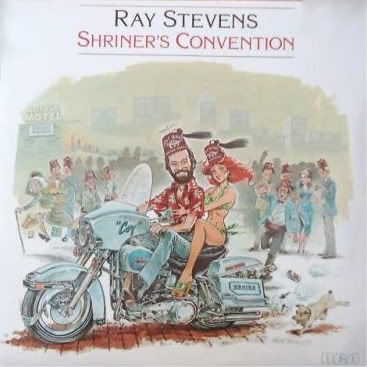 While searching through eBay earlier I came across a seller offering an LP version of Shriner's Convention for an opening bid of ninety-nine cents. This price, of course, wouldn't include the shipping and handling for anyone who wins the album. Given that Ray's RCA material has yet to really be properly showcased in CD or Mp3 format it would be wise for those seeking out his 1980 album to seriously think about either purchasing the LP or keep track of it in your watch list. Those who are familiar with eBay will know what I'm referring to. I already have the LP version of Shriner's Convention and it was on eBay where I bought the equally scarce cassette version when it came up for sale a couple of years ago. The cassette version has a catalog number of AYK1-4253 while the LP's catalog number is AHK1-3574. 15 years later Ray made a music video of the song and included it in his direct-to-video movie, Get Serious!. Ray later uploaded the 1995 music video onto You Tube back in July of 2009. I've written about Ray's 1995 movie several times. It's available in home video format and can often be found on eBay. If you do an internet search for "Ray Stevens + Get Serious" you're bound to come across web-sites that give information about the movie.
While searching through eBay earlier I came across a seller offering an LP version of Shriner's Convention for an opening bid of ninety-nine cents. This price, of course, wouldn't include the shipping and handling for anyone who wins the album. Given that Ray's RCA material has yet to really be properly showcased in CD or Mp3 format it would be wise for those seeking out his 1980 album to seriously think about either purchasing the LP or keep track of it in your watch list. Those who are familiar with eBay will know what I'm referring to. I already have the LP version of Shriner's Convention and it was on eBay where I bought the equally scarce cassette version when it came up for sale a couple of years ago. The cassette version has a catalog number of AYK1-4253 while the LP's catalog number is AHK1-3574. 15 years later Ray made a music video of the song and included it in his direct-to-video movie, Get Serious!. Ray later uploaded the 1995 music video onto You Tube back in July of 2009. I've written about Ray's 1995 movie several times. It's available in home video format and can often be found on eBay. If you do an internet search for "Ray Stevens + Get Serious" you're bound to come across web-sites that give information about the movie.  As I mentioned in a previous blog entry this cassette version has two songs that appear in different sequence than how they appear on the LP version. In the cassette version "Coin Machine" appears as track number two while "The Last Laugh" appears as track number nine. On the LP version "The Last Laugh" is track number two and "Coin Machine" closes out the album as track number nine. Yes, you read that correctly, the comedy album only features 9 songs but a couple of the songs are rather lengthy and so it plays out like an 11 or 12 track collection as far as overall length of time is concerned. The title track, "Shriner's Convention", clocks in at around 5 minutes, 33 seconds while "The Dooright Family" clocks in at just over 5 minutes in length. "Rita's Letter", a comical love story, is easily 3 and a half minutes long but I don't know the official length of that particular recording. "You're Never Goin' To Tampa With Me" is 3 minutes, 50 seconds.
As I mentioned in a previous blog entry this cassette version has two songs that appear in different sequence than how they appear on the LP version. In the cassette version "Coin Machine" appears as track number two while "The Last Laugh" appears as track number nine. On the LP version "The Last Laugh" is track number two and "Coin Machine" closes out the album as track number nine. Yes, you read that correctly, the comedy album only features 9 songs but a couple of the songs are rather lengthy and so it plays out like an 11 or 12 track collection as far as overall length of time is concerned. The title track, "Shriner's Convention", clocks in at around 5 minutes, 33 seconds while "The Dooright Family" clocks in at just over 5 minutes in length. "Rita's Letter", a comical love story, is easily 3 and a half minutes long but I don't know the official length of that particular recording. "You're Never Goin' To Tampa With Me" is 3 minutes, 50 seconds.
 One of the items that was an exclusive to the Ray Stevens fan club was the 1992 compilation gospel album, A Brighter Day. The fan club shut down in 2002. The collection, as you can see, was issued in two volumes. Each volume features 10 recordings ranging from 1968 through 1977. Much of the material, in fact all of the material on Volume One, was lifted from his 1972 gospel album, Turn Your Radio On, while the songs on Volume Two originated elsewhere. Looking at the collection of songs I can see that Volume One features pretty much standard gospel recordings while Volume Two is more inspirational in tone...with a few songs delving into societal commentary. Ray penned four of the twenty songs on this collection and he produced and arranged every recording. The four songs that were written by Ray appear on Volume Two.
One of the items that was an exclusive to the Ray Stevens fan club was the 1992 compilation gospel album, A Brighter Day. The fan club shut down in 2002. The collection, as you can see, was issued in two volumes. Each volume features 10 recordings ranging from 1968 through 1977. Much of the material, in fact all of the material on Volume One, was lifted from his 1972 gospel album, Turn Your Radio On, while the songs on Volume Two originated elsewhere. Looking at the collection of songs I can see that Volume One features pretty much standard gospel recordings while Volume Two is more inspirational in tone...with a few songs delving into societal commentary. Ray penned four of the twenty songs on this collection and he produced and arranged every recording. The four songs that were written by Ray appear on Volume Two. 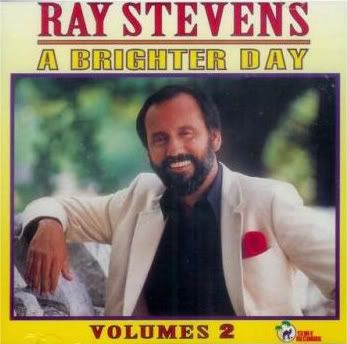 The album's title references an inspirational song that Ray recorded in 1970. "A Brighter Day" was written by Ray and it originally appeared as the B-side of another Ray Stevens composition, "Everything Is Beautiful". These two songs were the only original recordings featured on his 1970 album, Everything Is Beautiful, and they both make an appearance on the Volume Two collection. The rest of the material on Volume Two feature more inspirational recordings like "One and Only You", "Set The Children Free", and "Everybody Needs a Rainbow". Social commentary blended in with inspirational overtones is the goal of "Mr. Businessman", "Walk a Mile In My Shoes", "Come Around", and "Get Together". I was really surprised to see the inclusion of "One and Only You" and "Set The Children Free" given that the two songs originated on Warner Brothers, 1976 and 1977 respectively. Typically the songs associated with Warner Brothers that Ray recorded hardly ever show up in any collection.
The album's title references an inspirational song that Ray recorded in 1970. "A Brighter Day" was written by Ray and it originally appeared as the B-side of another Ray Stevens composition, "Everything Is Beautiful". These two songs were the only original recordings featured on his 1970 album, Everything Is Beautiful, and they both make an appearance on the Volume Two collection. The rest of the material on Volume Two feature more inspirational recordings like "One and Only You", "Set The Children Free", and "Everybody Needs a Rainbow". Social commentary blended in with inspirational overtones is the goal of "Mr. Businessman", "Walk a Mile In My Shoes", "Come Around", and "Get Together". I was really surprised to see the inclusion of "One and Only You" and "Set The Children Free" given that the two songs originated on Warner Brothers, 1976 and 1977 respectively. Typically the songs associated with Warner Brothers that Ray recorded hardly ever show up in any collection.  CD singles never really caught on, in my opinion, as compared to the vinyl 45 single. A CD single would include two or three songs on one disc...with the first song being the "A-side" and the next song or two being the "B-side". This CD single is of "Power Tools", a comedy song that Ray recorded in 1991 for his album #1 With a Bullet. There wasn't any "B-side" as this was considered a promo single available at radio stations. As is the case with many vinyl singles, the CD singles are also in abundant supply in various on-line marketplaces. This CD single from Ray was issued early in 1992...and "Power Tools" reached the country charts as well! Although it charted well below the Top-40 it became the last single to reach the country charts for Ray until a decade later, in 2002, when "Osama Yo' Mama" reached the Top-50. Those who follow Ray's career, as I do, know that he shifted focus from audio to music video during the 1990's and as a result had his biggest successes with music video projects during the '90s decade.
CD singles never really caught on, in my opinion, as compared to the vinyl 45 single. A CD single would include two or three songs on one disc...with the first song being the "A-side" and the next song or two being the "B-side". This CD single is of "Power Tools", a comedy song that Ray recorded in 1991 for his album #1 With a Bullet. There wasn't any "B-side" as this was considered a promo single available at radio stations. As is the case with many vinyl singles, the CD singles are also in abundant supply in various on-line marketplaces. This CD single from Ray was issued early in 1992...and "Power Tools" reached the country charts as well! Although it charted well below the Top-40 it became the last single to reach the country charts for Ray until a decade later, in 2002, when "Osama Yo' Mama" reached the Top-50. Those who follow Ray's career, as I do, know that he shifted focus from audio to music video during the 1990's and as a result had his biggest successes with music video projects during the '90s decade.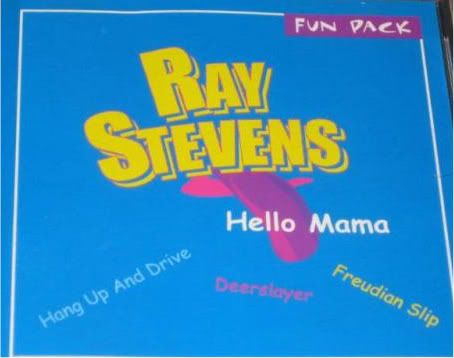 A little-known comedy song, "Hello Mama", should be more well known. It's a sequel to "Osama Yo' Mama", a song Ray had a hit with late in 2001 and into mid 2002. In "Hello Mama", the story of bin Laden on the run, we hear the various phone conversations between a soft-spoken bin Laden and the screechy-voiced mother. The mother's voice was also a big part of "Osama Yo' Mama". Ray plays both roles of course. In addition to Osama and his Mama we also have another person featured prominently, George W. Bush, known as "Dubyah" in both recordings. "Hello Mama" purposely carries the same melody as "Osama Yo' Mama" and so if you hear the two songs back to back it'll be like one big comedy song.
A little-known comedy song, "Hello Mama", should be more well known. It's a sequel to "Osama Yo' Mama", a song Ray had a hit with late in 2001 and into mid 2002. In "Hello Mama", the story of bin Laden on the run, we hear the various phone conversations between a soft-spoken bin Laden and the screechy-voiced mother. The mother's voice was also a big part of "Osama Yo' Mama". Ray plays both roles of course. In addition to Osama and his Mama we also have another person featured prominently, George W. Bush, known as "Dubyah" in both recordings. "Hello Mama" purposely carries the same melody as "Osama Yo' Mama" and so if you hear the two songs back to back it'll be like one big comedy song. 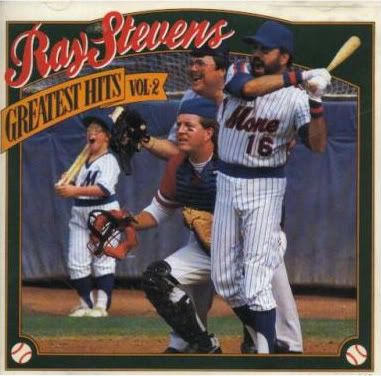 I've written about this particular collection in a couple of my older blog entries. It's considered a secondary compilation album due to it being a volume two release and the fact that what the industry would call a 'monster hit' are all included in volume one. However, this volume two release isn't chopped liver by any stretch of the imagination. While it doesn't feature an abundance of signature hits it nonetheless features material that eventually became just as synonymous with Ray. The album spotlights two songs from 1985, one from 1986, and two from 1987...one of those songs from 1987 being the then brand new "Mama's in the Sky With Elvis". The other 5 recordings were considered vintage Ray Stevens in 1987...they're considered classics in his career now. Ray's current hit at the time was "Would Jesus Wear a Rolex?" and what better way to issue a hits album than to have the lead-off track be among the most-talked about country songs of the year. The song crossed over into the mainstream as newspaper columnists from across the country wrote about it...it even ended up being nominated for a Grammy. The televangelist scandal was so huge and prolonged that Ray's single was still being referenced nearly a year after it hit...research shows that a few columnists in 1988 were name dropping the song anytime the topic of televangelists arose. It was one of those national hit songs that pop audiences knew about but it never even made an appearance on the Hot 100 pop chart believe it or not. It did, however, make the country music charts. The song was written by Chet Atkins and Margaret Archer.
I've written about this particular collection in a couple of my older blog entries. It's considered a secondary compilation album due to it being a volume two release and the fact that what the industry would call a 'monster hit' are all included in volume one. However, this volume two release isn't chopped liver by any stretch of the imagination. While it doesn't feature an abundance of signature hits it nonetheless features material that eventually became just as synonymous with Ray. The album spotlights two songs from 1985, one from 1986, and two from 1987...one of those songs from 1987 being the then brand new "Mama's in the Sky With Elvis". The other 5 recordings were considered vintage Ray Stevens in 1987...they're considered classics in his career now. Ray's current hit at the time was "Would Jesus Wear a Rolex?" and what better way to issue a hits album than to have the lead-off track be among the most-talked about country songs of the year. The song crossed over into the mainstream as newspaper columnists from across the country wrote about it...it even ended up being nominated for a Grammy. The televangelist scandal was so huge and prolonged that Ray's single was still being referenced nearly a year after it hit...research shows that a few columnists in 1988 were name dropping the song anytime the topic of televangelists arose. It was one of those national hit songs that pop audiences knew about but it never even made an appearance on the Hot 100 pop chart believe it or not. It did, however, make the country music charts. The song was written by Chet Atkins and Margaret Archer. 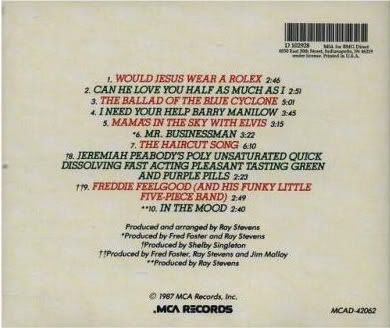 Of course, this is the flip-side of the CD version. It lists the 10 tracks that appear on the hits album including their running time. As you all can see it keeps with the color theme of red and green...the cassette version also retains this color pattern as well. The cassette version of this release was one of the first Ray Stevens tapes that I got for Christmas. There was a local shopping store in the town where I lived and they had a modest cassette tape section on the other side of the vinyl album racks. The cassette tapes back then were kept behind locked glass cases due to the fact that they were sold without any security plastic as became the custom at some point in the early '90s. The downside to those security cases was a lot of times it hid the titles of several songs...and it wasn't until the cassette was bought and the plastic case removed that I saw the complete title of "Freddie Feelgood" and "In the Mood". Remember, at that time, I was still relatively new to Ray's career and didn't yet have hardly any of his albums or know the names of a lot of his songs and so it was a big deal having that plastic security case finally removed so I could finally see the names of those songs. When I saw "In the Mood" listed as a song I assumed it was going to be an instrumental of some kind...and then I heard it...and heard all of those chickens for the first time!! I've preferred Ray's version ever since.
Of course, this is the flip-side of the CD version. It lists the 10 tracks that appear on the hits album including their running time. As you all can see it keeps with the color theme of red and green...the cassette version also retains this color pattern as well. The cassette version of this release was one of the first Ray Stevens tapes that I got for Christmas. There was a local shopping store in the town where I lived and they had a modest cassette tape section on the other side of the vinyl album racks. The cassette tapes back then were kept behind locked glass cases due to the fact that they were sold without any security plastic as became the custom at some point in the early '90s. The downside to those security cases was a lot of times it hid the titles of several songs...and it wasn't until the cassette was bought and the plastic case removed that I saw the complete title of "Freddie Feelgood" and "In the Mood". Remember, at that time, I was still relatively new to Ray's career and didn't yet have hardly any of his albums or know the names of a lot of his songs and so it was a big deal having that plastic security case finally removed so I could finally see the names of those songs. When I saw "In the Mood" listed as a song I assumed it was going to be an instrumental of some kind...and then I heard it...and heard all of those chickens for the first time!! I've preferred Ray's version ever since. 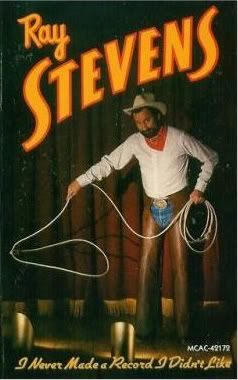 One of my favorite Ray Stevens comedy albums is 1988's I Never Made a Record I Didn't Like, a phrase which spoofed a quote from Will Rogers...which is why Ray appears on the album cover in cowboy attire performing a rope trick. For the trivia people out there: This marked Ray's first comedy album to not feature any recordings with an audience background. At the time of it's release it featured 9 brand-new songs and 1 song from his 1987 Greatest Hits, Volume Two album. That song, "Mama's in the Sky With Elvis", is track three on the 1988 release. On the volume two hits album of 1987, as you can see from the image above, it was track number five. The topics that are spoofed, satirized, or given a gentle slap across the face include cable television, hippies, monsters, and Michael Jackson...what a combination!! The track list for this particular comedy album is located below...
One of my favorite Ray Stevens comedy albums is 1988's I Never Made a Record I Didn't Like, a phrase which spoofed a quote from Will Rogers...which is why Ray appears on the album cover in cowboy attire performing a rope trick. For the trivia people out there: This marked Ray's first comedy album to not feature any recordings with an audience background. At the time of it's release it featured 9 brand-new songs and 1 song from his 1987 Greatest Hits, Volume Two album. That song, "Mama's in the Sky With Elvis", is track three on the 1988 release. On the volume two hits album of 1987, as you can see from the image above, it was track number five. The topics that are spoofed, satirized, or given a gentle slap across the face include cable television, hippies, monsters, and Michael Jackson...what a combination!! The track list for this particular comedy album is located below...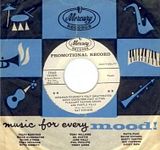
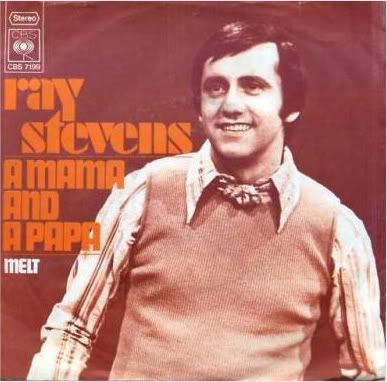 The "Melt" song is originally what appeared as the B-side here in America...and as I remarked in a previous blog "Melt" has never been made available on any LP album, cassette, CD, or Mp3. To this day, as far as I know, it's only available as the B-side to "A Mama and a Papa". Let me see if I can describe the arrangement as best as I can for those who've never heard "Melt" before. It starts out with loud emphasis on piano...as if the microphone was placed inches above the hammers of the piano and it probably was. Ray delivers the song in a sort of melancholy voice which stands in contrast to the full-on, romantically charged lyrics...and the melody escalates as it reaches the chorus. When I first heard the song it made me think of something of British origin...it has that international sound, as I call it. Musically it doesn't sound like a song meant for America simply because of how different it sounded. The sound of a song, for Ray Stevens, is just as crucial as the actual lyrics. This is why he takes arranging any song seriously whether it's comical or non-comical. I've read quotes by Ray where he's said things like "I want my recordings to tell a story musically as well as lyrically".
The "Melt" song is originally what appeared as the B-side here in America...and as I remarked in a previous blog "Melt" has never been made available on any LP album, cassette, CD, or Mp3. To this day, as far as I know, it's only available as the B-side to "A Mama and a Papa". Let me see if I can describe the arrangement as best as I can for those who've never heard "Melt" before. It starts out with loud emphasis on piano...as if the microphone was placed inches above the hammers of the piano and it probably was. Ray delivers the song in a sort of melancholy voice which stands in contrast to the full-on, romantically charged lyrics...and the melody escalates as it reaches the chorus. When I first heard the song it made me think of something of British origin...it has that international sound, as I call it. Musically it doesn't sound like a song meant for America simply because of how different it sounded. The sound of a song, for Ray Stevens, is just as crucial as the actual lyrics. This is why he takes arranging any song seriously whether it's comical or non-comical. I've read quotes by Ray where he's said things like "I want my recordings to tell a story musically as well as lyrically". 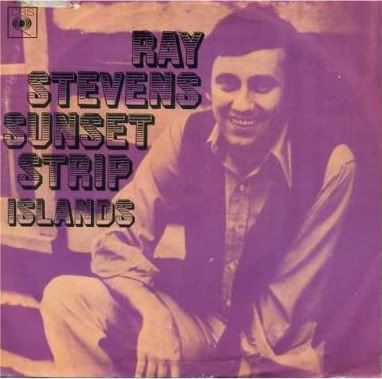 Speaking of music arrangement and the like...this particular single from Ray Stevens is glorious in it's production and performance. "Sunset Strip" obviously pays tribute to the Sunset Strip but it also doubles as a nod to the West Coast music scene of that time period...specifically the Beach Boys sound. Now, now...before anyone out there can say this is the type of song that the so-called former "liberal, Democrat Ray Stevens" preferred prior to his "Tea Party metamorphosis" I would encourage people to actually listen to the song before drawing any political conclusions. "Sunset Strip" is a non-political song...even though some who hear it may walk away with the belief that Ray's in love with all things California...including their mostly liberal politics. What I took from the song is a basic study of the social scene as seen through the eyes and mind of one brand new to that culture...not exactly an endorsement of any political party. Having the urge to escape real life for a day or two isn't indicative of being a Democrat or Republican...more or less it's basic human nature to get away from reality every now and then. "Sunset Strip" offers that escape. It's B-side, "Islands", is a love song about a relationship gone bad and how the man and woman reside on two separate islands, figuratively, unable to reunite. Each of these songs, from 1970, are from his Unreal album. This album was released a couple years ago on CD accompanied with his other 1970 album, Everything Is Beautiful.
Speaking of music arrangement and the like...this particular single from Ray Stevens is glorious in it's production and performance. "Sunset Strip" obviously pays tribute to the Sunset Strip but it also doubles as a nod to the West Coast music scene of that time period...specifically the Beach Boys sound. Now, now...before anyone out there can say this is the type of song that the so-called former "liberal, Democrat Ray Stevens" preferred prior to his "Tea Party metamorphosis" I would encourage people to actually listen to the song before drawing any political conclusions. "Sunset Strip" is a non-political song...even though some who hear it may walk away with the belief that Ray's in love with all things California...including their mostly liberal politics. What I took from the song is a basic study of the social scene as seen through the eyes and mind of one brand new to that culture...not exactly an endorsement of any political party. Having the urge to escape real life for a day or two isn't indicative of being a Democrat or Republican...more or less it's basic human nature to get away from reality every now and then. "Sunset Strip" offers that escape. It's B-side, "Islands", is a love song about a relationship gone bad and how the man and woman reside on two separate islands, figuratively, unable to reunite. Each of these songs, from 1970, are from his Unreal album. This album was released a couple years ago on CD accompanied with his other 1970 album, Everything Is Beautiful.